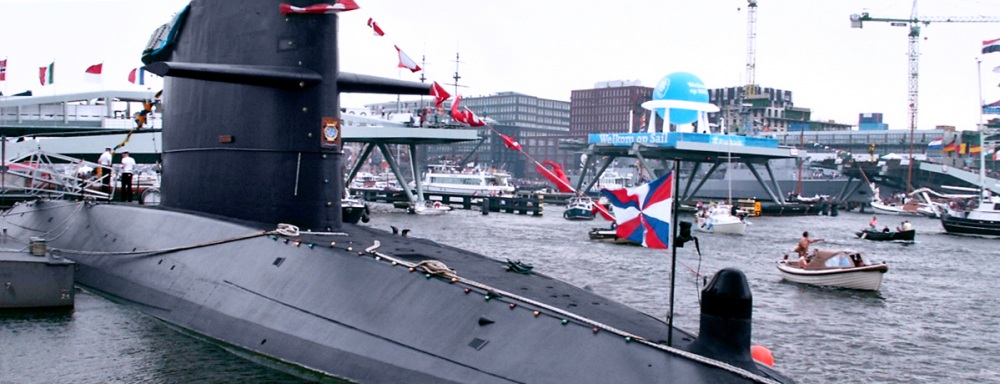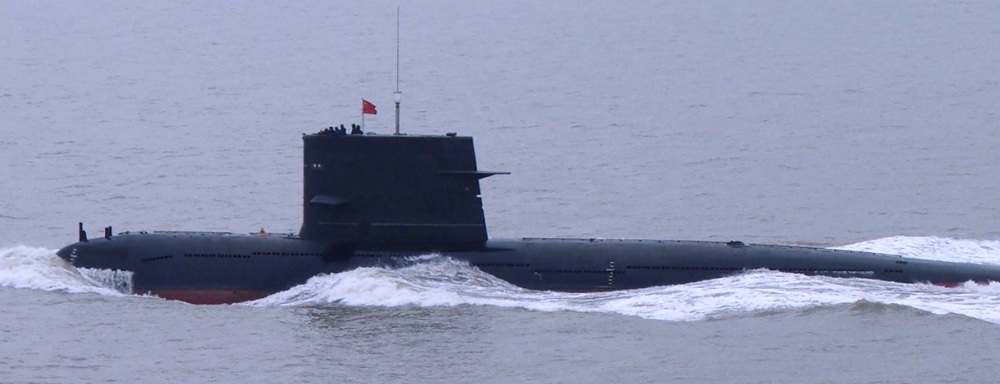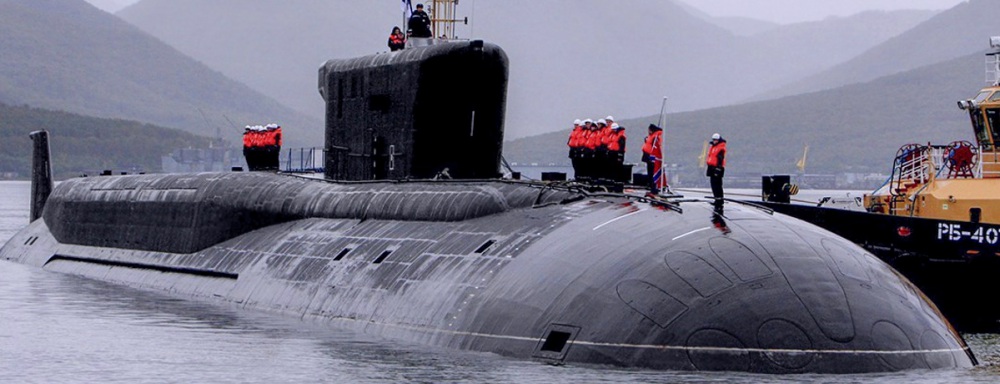
About the image
Capabilities at a Glance
Based at Den Helder, the Royal Netherlands Navy (RNLN) currently operates four Walrus-class boats, built indigenously by Dutch defense firm Rotterdamse Droogdok Mij (RDM).1 While the Dutch Navy primarily seeks to secure the Baltic and Mediterranean waters, it has also engaged in drug interdiction operations in the Caribbean, where the RNLN holds a minor base on the Netherlands Antilles.2
Total Submarines in Fleet: 4
- Ballistic Missile Submarines (SSBNs): 0
- Nuclear-Powered attack submarines (SSNs): 0
- Diesel-electric attack submarines (SSKs): 4
- Air-independent propulsion (AIP) enabled: 0
Submarines
History
In the early 1990s, the Dutch government decommissioned its two Zwaardvis-class submarines with plans to procure six Walrus-class vessels. However, they ended up building only four submarines: the Walrus (S802), Zeeleeuw (S803), Dolfijn (S808), and Bruinvis (S810).3 In June 2008, the RNLN commissioned German manufacturer L-3 ELAC Nautik to upgrade the medium-range sonar systems of three of the four Walrus-class submarines. Then, in 2009, the RNLN contracted German shipbuilding company Howaldtswerke-Deutsche Werft to supply and integrate second-generation HABETaS escape system into all the vessels.4
Modernization and Current Capabilities
The RNLN is interested in maintaining and updating its existing submarine capabilities. In May 2013, the Netherlands Ministry of Defense signed a contract with Imtech Marine Netherlands to refit its four Walrus-class submarines, extending their service lives to 2025 and upgrading their sonar, navigation, and communications systems.5 In January 2015, Dutch shipbuilder Damen Shipyards Group and Swedish defense firm Saab Group formed a consortium to develop an expeditionary submarine for Netherland’s Walrus Replacement Programme (WRES).6 In addition, the RNLN contracted Damen to refit submarine support ship and torpedo tender HNLMS Mercuur (A900), which reentered service in mid-2016. The upgraded Mercuur possesses an enhanced communications suite which improves operational flexibility.7 Under the WRES, the four Walrus-class submarines currently in service will be replaced with four new vessels. On 30 September 2022, the Netherlands announced that its request for bids for the replacement program was now open, and the project budget had been increased.8 France’s Naval Group, Sweden’s Saab Kockums, and Germany’s ThyssenKrupp Marine Systems (TKMS) received a request for quotation (RFQ) from the Netherlands Ministry of Defense (MoD) on 16 November 2022, and the companies were expected to submit their bids during the summer of 2023.9 The MoD anticipated that the replacement program would take a decade from awarding a contract to the time when the first two submarines enter service. In the meantime, the first two Walrus-class vessels will be decommissioned, and their parts will be used to extend the service of the other two.10
Ship Biographies
Walrus-Class
The RNLN possesses four Walrus-class diesel-electric attack submarines. These vessels are 67.7 meters long with an 8.4-meter-wide beam and can travel up to 20 knots when submerged. They can remain submerged for 60 days without surfacing. Their weapons systems are capable of firing torpedoes.11
Import and Export Behavior
Imports
The Netherlands does not import submarines.
Exports
Historically, the Netherlands hosted two main shipyards for submarine export: Roterdamsche Droogdok Maatschappij Submarines B.V. (RDM) and the Wilton Fijenoord shipyard. However, due to a shortage of orders, Fijenoord closed its submarine division in 1988. Similarly, RDM ceased submarine production in 2004 due and filed for bankruptcy.12
In 1981, the Dutch government exported two Zwaardvis-class vessels to Taiwan. Facing Chinese pressure, the Netherlands did not pursue any further defense sales to Taiwan.13 Since the Netherlands’ aborted attempt to export used Zwaardvis-class submarines to Malaysia in 2006, Dutch companies have not attempted further submarine sales.14
Explore the Collection
Australia Submarine Capabilities
Brazil Submarine Capabilities
Chile Submarine Capabilities
China Submarine Capabilities
France Submarine Capabilities
Germany Submarine Capabilities
Greece Submarine Capabilities
India Submarine Capabilities
Indonesia Submarine Capabilities
Iran Submarine Capabilities
Israel Submarine Capabilities
Italy Submarine Capabilities
Japan Submarine Capabilities
Malaysia Submarine Capabilities
Your are currently on
Netherlands Submarine Capabilities
North Korea Submarine Capabilities
Pakistan Submarine Capabilities
Russia Submarine Capabilities
Singapore Submarine Capabilities
South Korea Submarine Capabilities
Sweden Submarine Capabilities
Taiwan Submarine Capabilities
United States Submarine Capabilities
Submarine Detection and Monitoring: Open-Source Tools and Technologies
Stay Informed
Sign up for our newsletter to get the latest on nuclear and biological threats.
More on
United States Submarine Capabilities
Overview of the United States' submarine capabilities and import-export behavior.

China Submarine Capabilities
A highlight of global trends in the sale and acquisition of diesel- and nuclear-powered submarines by country with capabilities, imports and exports. (CNS)

Russia Submarine Capabilities
Overview of Russia's submarine capabilities and import-export behavior.
Glossary
- SSBN
- Ship, Submersible, Ballistic, Nuclear: A hull classification for a submarine capable of launching a ballistic missile. The "N", or nuclear, refers to the ship's propulsion system. SSBN's are generally reserved for strategic vessels, as most submarine launched ballistic missiles carry nuclear payloads. A non-strategic vessel carries the designation SSN, or attack submarine.
- Diesel-electric submarine
- Diesel-electric submarine: A submarine with a diesel-electric transmission. Diesel-electric transmissions require access to oxygen for the diesel generator to charge the submarine’s batteries or drive the motor. This type of submarine is thus louder and must surface more frequently than a nuclear-powered submarine. A diesel-electric submarine can fire conventional cruise missiles against land targets, and in theory, can also carry nuclear-tipped cruise missiles. Diesel-electric submarines are significantly cheaper to build and purchase than nuclear-powered vessels, which makes them the vessel of choice for smaller navies.
- Air Independent Propulsion Technology (AIP)
- Air Independent Propulsion Technology (AIP): A propulsion system that uses liquid (or compressed) oxygen or hydrogen fuel cells, thereby allowing submarines to stay submerged for longer periods without the need for external sources of oxygen. This increased endurance also increases a submarine’s survivability.
- Entry into force
- The moment at which all provisions of a treaty are legally binding on its parties. Every treaty specifies preconditions for its entry into force. For example, the NPT specified that it would enter into force after the United States, the United Kingdom, and the Soviet Union (the Depository governments) and 40 other countries ratified the treaty, an event that occurred on March 5, 1970. See entries for Signature, Ratification.
Sources
- The Military Balance 2009, International Institute for Strategic Studies, (London: Routledge, 2009), p. 138; “Submarine Forces, Netherlands,” Jane’s Underwater Warfare Systems, 28 September 2011.
- Interview with Vice Admiral Clees van Duyvendijk, Commander in Chief RNN; “Navy chiefs of staff on MCM and minelaying,” Naval Forces, 2001, Vol. 22, No. 3, pp. 62-68; “Chamber of approves deployment of Netherlands troops,” NRC Handelsblad, 16 November 2001; “Netherlands parliament approves troop deployment in Afghanistan,” FBIS Document EUP2001111800022; Menno Steketee, “Dutch Submarine to Fight Somali Piracy,” Jane’s Defence Weekly, 30 June 2010.
- Paul Berrill, “RDM profits hit by restructuring,” Loyd’s List International, 8 June 1991.
- “Walrus-Class Submarines,” Naval Technology, accessed 5 August 2019, www.naval-technology.com.
- Menno Steketee, “Dutch MoD issues contract for Walrus-class submarine life extension,” HIS Jane’s Navy International, 19 May 2013, www.janes.com; “Dutch Upgrading Submarines,” UPI, 8 December 2011; “OSI Geospatial Signs Contract to Provide WECDIS Systems for the Royal Netherlands Navy Walrus Class Submarines,” Canada NewsWire, 12 July 2012; “Kongsberg Contract for New Passive Sonar Processing Systems to Dutch Submarines,” Cision Nordic Companies Press Releases (Scandinavia), 27 June 2011.
- “SAAB and Damen Team for Walrus Future Submarine Replacement Programme,” Damen, 20 January 2015, www.damen.com; “SAAB-Damen Presents Design of the Replacement Walrus-class Submarine,” Damen, 1 June 2018, www.damen.com; Hugo Ammerlam, “The Walrus Class submarine and beyond,” MARIN Report no. 119 (January 2017); “How the Saab-Damen Consortium Will Meet the Dutch Requirement in Replacing the Walrus Class,” Saab Corporate, 2 March 2019, https://saabgroup.com.
- Menno Steketee, “Damen Contracted to Refit Dutch Submarine Tender Mercuur,”Jane’s Navy International 120, no. 6 (2015).
- “Important milestone submarine replacement: request for quotation ready,” Netherlands Ministry of Defense, 30 September 2022, www.defensie.nl.
- Harry Lye, “UPDATED: The three boats in the running to be the Netherlands’ next submarine,” Shephard Media, 24 November 2022, www.shephardmedia.com.
- “Three firms receive RFQ for Dutch submarine replacement project,” Naval Technology, 17 November 2022, www.naval-technology.com.
- “Walrus Class,” Military-Today.com, accessed 5 August 2019.
- Alan Dickey, “Special report on the Netherlands: shipbuilding orders down,” Lloyd’s List International, 18 February 1992; “Current situation port affair,” Port of Rotterdam, 2 November 2004, www.portofrotterdam.com.
- T’ang Sheng, “Mainland strengthens prowess of submarines to deter ‘Taiwan Independence’ forces,” Ching Pao, 1 September 2002.
- “Dutch Submarines Stranded in Lumut to be Sold as Scraps,” Malaysia General News, 19 February 2006.
